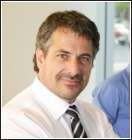 Methadone.US has successfully educated and enlightened many thousands of online visitors over the last two years. Our goal has been to demystify & destigmatize opioid replacement therapy, and to highlight how methadone, suboxone, and other treatment interventions can give patients a new lease on life.
Methadone.US has successfully educated and enlightened many thousands of online visitors over the last two years. Our goal has been to demystify & destigmatize opioid replacement therapy, and to highlight how methadone, suboxone, and other treatment interventions can give patients a new lease on life.
It is important to emphasize that methadone and suboxone are medically-approved treatments in wide use across the United States and the world. In the US, these medications are prescribed and administered under the supervision of a physician. A physician is at the core of every methadone clinic, and it is the physician who is authorized to prescribe suboxone for opioid addicted patients needing relief and hope.
On our city pages, Methadone.US lists local physicians who are certified to write prescriptions for buprenorphine (suboxone). Our lists are drawn from the United States government database at SAMHSA (Substance Abuse and Mental Health Services Administration). Our city pages are fairly extensive and cover most of the continental United States. However, suboxone and methadone treatment have become so popular that even smaller towns now often have medical professionals providing some form of opioid addiction treatment.
Suboxone doctors and opioid treatment specialists are very much needed in response to the country’s growing opioid addiction problem. Suboxone doctors are in a unique position to not only offer much desired relief from opioid withdrawal, but they can also promote with patients the importance of committing themselves to a process of counseling, recovery, and long-term behavior change such that ongoing drug abstinence becomes possible.
Many suboxone-certified physicians are also board certified addictionologists. This means that they have received special training in identifying & treating addiction disorders of all varieties.
If living in the New York metropolitan area, you can obtain more information about local suboxone doctors at: NewYorkSuboxone.com
For those in the Los Angeles metro area, visit: LosAngelesSuboxone.com

 Methadone “take home” medication (also referred to as “take outs”) is a true convenience for those enrolled in a methadone clinic. Typically, clients who demonstrate that they are drug free and progressing in their substance abuse treatment can earn the privilege to receive take home medication.
Methadone “take home” medication (also referred to as “take outs”) is a true convenience for those enrolled in a methadone clinic. Typically, clients who demonstrate that they are drug free and progressing in their substance abuse treatment can earn the privilege to receive take home medication.


